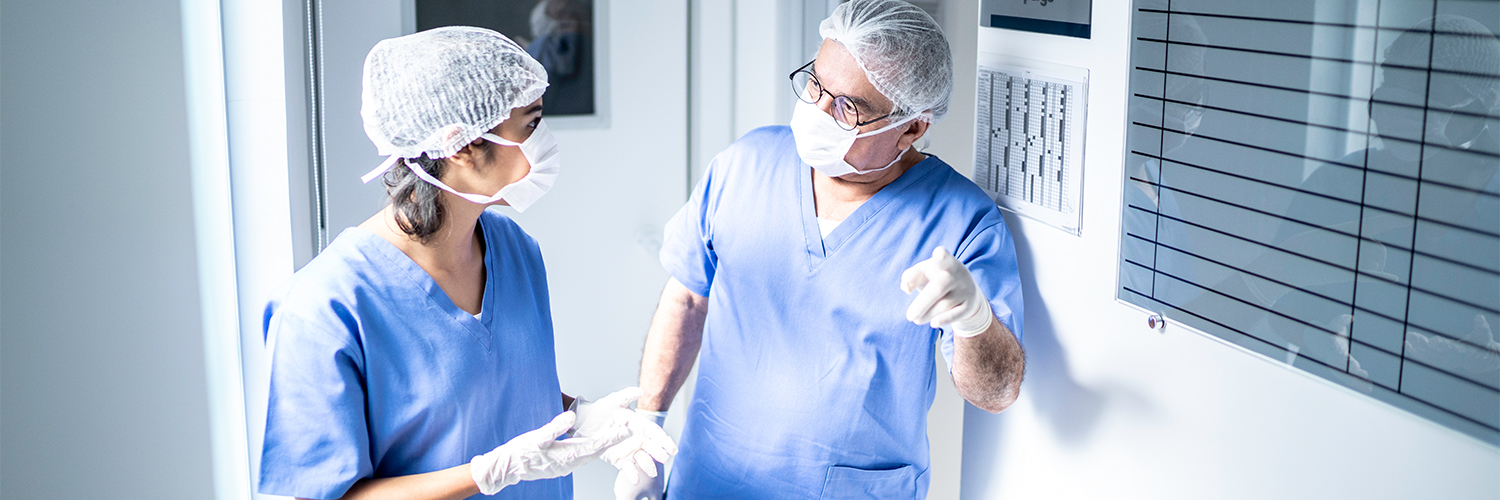One major impact of the COVID-19 pandemic was the recommendation from the Centers for Medicare & Medicaid Services to cancel elective surgeries and procedures, essentially redirecting hospital resources to manage the insurgence of COVID-19 patients. The initial response was one of cooperation and concern for patient safety, which resulted in a significant loss of hospital revenue. It was difficult and yet necessary.
The United States is now poised to resume elective procedures and surgeries, but to do that is complicated and will take a thoughtful and well-planned-out approach. Facility readiness should be considered based on an assessment of the local community and authorized by municipal, county and state agencies. There are many aspects to consider, including patient safety, staff safety, and how to make fair and equitable decisions.
Conducting outreach to patients and informing them about the safety measures the organization is taking will reassure patients in need of treatment. Use of personal communication via phone, mail and email will help convey to patients and their families that the risk has been significantly reduced. Communication should include both printed and online material about what to expect and how to prepare for surgery, as well as a list of frequently asked questions.
Preparation for treatment includes pre-procedure COVID-19 testing within a designated timeframe (anywhere between 24-72 hours). However, organizations should check with state authorities, as many have mandated testing requirements. Organizations should plan for testing turnaround times that allow at least 24 hours prior to the scheduled procedure to obtain results and develop a process for how to reschedule if the test is positive. Even with precautions, careful determination of risks and benefits is essential. Patients who underwent surgery and had an unknown case of COVID-19 had a 21% increase in mortality with 44% resulting in an ICU stay.
The wellbeing of healthcare workers should be top of mind, and actions to protect them should address both physical and mental health. Communicate with staff about the measures being taken for their safety and protection and allow them to make the important decision about when to return to work. Many organizations are requiring daily attestations from onsite employees to confirm that they are not experiencing any of the symptoms listed in the attestation. There are nine recommended elements for the attestation: fever, cough, shortness of breath, sore throat, diarrhea, myalgia, loss of smell, loss of taste, and confirming there has been no travel outside of the country in the past 14 days.
Decisions about which procedures are elective and which are medically necessary will need to be made using evidence-based practices. For hospitals and outpatient/ambulatory surgery centers every aspect of patient flow, including policies and procedures, must be assessed and revised as necessary. This will undoubtedly take considerable effort but will pay off in the long run. Ramp up incrementally rather than trying to open at full capacity. Operationalizing the new normal must take into account the increased time decontamination and cleaning will add to each case. It is also important to continue to monitor ICU bed capacity and COVID-19 hospitalizations in accordance with local, state and federal requirements and/or guidance.
When thinking about how to structure the procedural aspect, organize around the five phases of treatment: preoperative, immediate preoperative, intraoperative, postoperative and post-discharge. Be sure to prepare and provide important information for staff and physicians about what is expected, and which changes have been made to accommodate all new requirements. Staffing plans should also be reviewed to ensure that there is adequate coverage for the types of procedures and surgeries that are scheduled. Additionally, ensure there is sufficient access to the personal protective equipment needed, including an allowance for provider preference. Finally, include a review of social distancing measures and visitation policies.
The American College of Surgeons, the American Society of Anesthesiologists, the Association of Perioperative Registered Nurses and the American Hospital Association issued the Joint Statement: Roadmap for Resuming Elective Surgery After COVID-19 Pandemic to provide additional information.
Here are some key considerations:
- Timing for resumption of the surgical and procedural schedules and obtaining authorization from local, state and federal agencies
- Adopting policies for managing COVID-19 issues such as testing and test turnaround times, how to manage each phase of treatment (preoperative, intraoperative, postoperative, post-discharge) and indications for staff/provider testing, as well as a response plan for anyone who tests positive
- Monitoring and ensuring adequate access for personal protective equipment needed to resume elective procedures, evidence-based environmental cleaning standards, and medical device maintenance and cleaning
- Creating a prioritization strategy, including a multidisciplinary prioritization policy committee, which should include:
- Reviewing the canceled surgery/procedure list
- Use of objective prioritization tools by specialty services
- Assignment of times for the operating room and procedural schedule and capacity/required resource analysis
- A forum for daily decision-making and active problem-solving such as a surgical and procedural daily huddle
- Assessing existing policies for data collection and management related to testing, reporting, clinical outcomes and case postponement
- Establishing facility-based social distancing policies
- Training and education for staff, including healthcare worker well-being
- Providing patient communication and access to important information
Now is an opportune time to review the hazard vulnerability analysis for procedural and surgical services and identify which risk mitigation efforts to take in case multiple emergencies (such as a resurgence of COVID-19 and other seasonal or natural disasters) impact the facility.





